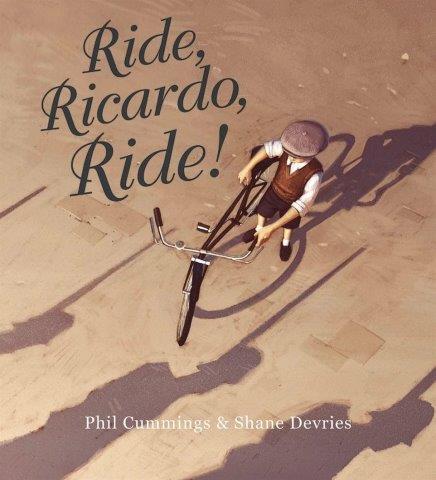Azaria: A True History by Maree Coote
I chose this title because of its interesting cover, and because it seemed to be covering the divisive topic of Lindy Chamberlin and the disappearance of her baby “Azaria”. I think it’s unique because it covers a topic that is rather violent and synthesises it in a way that is understandable for children without throwing them off. I actually didn’t know very much about this case until this book, like the fact that she was acquitted after they discovered her Azaria’s jumper, and that it went on for 32 years.

Azaria
I think that this book is very educational to people of all ages because it explains the court case very simply. With the decline of people reading as adults, I think that picture books are a good way to ease people into reading.
Review by Frixos, Yr 11
Mirror by Jeannie Baker
I was immediately interested in the book by the unique title, then, flipping over to see the blurb, I saw a scene that was both identical and opposite to the front. I was instantly hooked from the cover and opened the book to the middle. I realised that it was to be read multiples pages at a time and began to read. Depicting two families, same but different. The overwhelming difference had my eyes flicking back and forth, comparing each by their location. Slowly, the two families merge in their item uses. The modernised family installs an old fireplace, out of place around this modern house. In a house within Africa with mats and wonky tables, a PC is extremely out of place. This powerful, unexplainable message truly touches the reader.
Picture books are still extremely important as the saying ‘A picture paints a thousand words’ is extremely accurate as there are so many little messages in a picture. The unspoken message can be interpreted in too many ways.
Review by Ivan, Yr 7
“Ride, Ricardo, Ride,” written by Phil Cummings and illustrated by Shane Devries
I chose to read this book over the others because it has a catchy title with three-word alliteration and a fascinatingly authentic cover image. I wanted to know more about Ricardo and why he was riding his bike, so I started turning the pages.
What I learned
The textual section of the book is purposefully vague to allow the book’s morals to be interpreted universally and without the need to confront the true horrors of war however, the visual narrative is what really elevates this book. Depicting the loss of freedom, sadness, fear, and destruction, the illustrations are not only rich and deep but powerfully match the text, amplifying my emotions of sadness and happiness at the end. I learnt about the struggles and absolute futility of war, which leads to dreary sadness and fear for both sides involved. Representing the loss of freedom is Ricardo’s bike, which he rides without a worry in the world but then has to dismantle to prevent “shadows” from taking it. After the war ends, he assembles the bike, revealing how he has grown and learnt to take agency over his life and returns to riding his bike happily, mirroring the freedom he had at the start, but also his newfound strength after enduring such hardship.
Why should we read picture books?
Picture books are powerful because they elevate meaning by engaging more of your senses and also provide an intense visual experience that can leave a lasting emotional impact. They are able to compress complex ideas, events, and messages into a short, impactful story that engages readers of all ages. All picture books contain immense details beyond the obvious message, and the reader’s age determines how deeply they can read between the lines. The same picture book can teach you a different thing each time you read it, and this is because there is so much up for interpretation. They take you on an emotional journey without necessarily forcing a conclusion, and people of all ages can enjoy that.
Reviewed by Tom Year 11
See also:
Picture Books for Older Readers database
Reviews and media coverage for Picture Books for Older Readers (PBOR) database
Reviews and media coverage for Picture Books for Older Readers (PBOR) database more
Reviews and media coverage for Picture Books for Older Readers (PBOR) database and more
Reviews of titles in the Picture Book for Older Readers Database
Promoting Picture Books for Older Readers – NCACL
Bibliography of Helpful Resources re Picture Books for Older Readers and their use
Please report any broken links to ncacl@canbera.edu.au
Posted by: NCACL | Published: 03 Sep 2023


